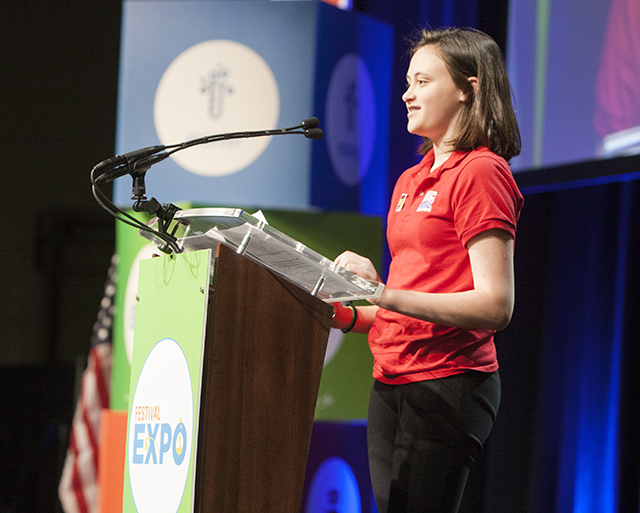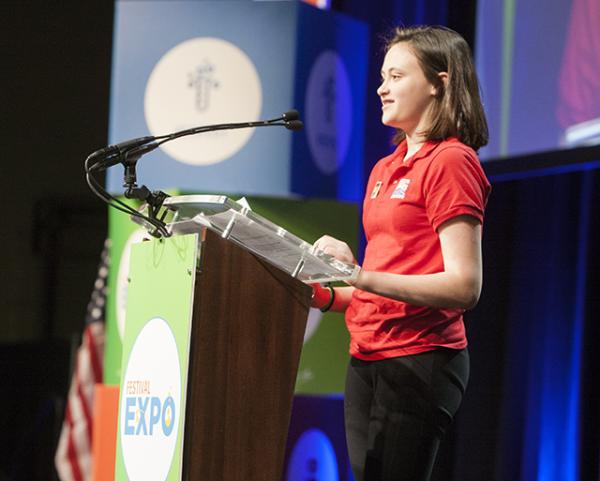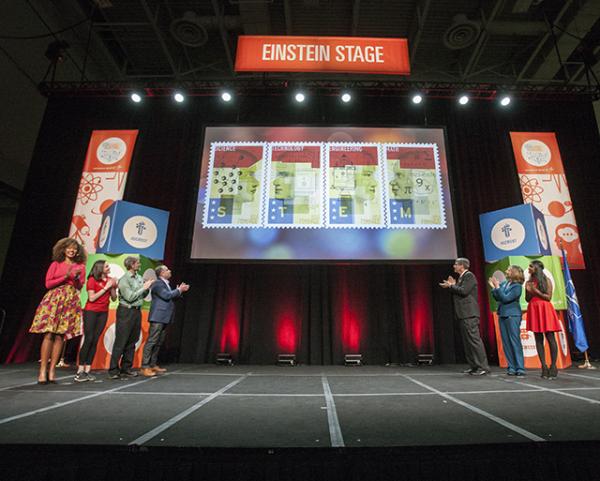KID REPORTERS’ NOTEBOOK
New Postage Stamps Celebrate STEM Education


Courtney introduces Steve Monteith, a U.S. Postal Service official, at a dedication ceremony for four new STEM Education stamps in Washington, D.C.
On April 6, the United States Postal Service unveiled four new Forever stamps that celebrate STEM education.
“In an increasingly competitive world, proficiency in the fields of science, technology, engineering, and mathematics—known collectively as STEM—is more critical than ever,” said Steve Monteith, a U.S. Postal Service official who dedicated the stamps.
There are four different designs for the postage stamps, which come in packs of 20 and feature mathematical equations, symbols, and other abstract concepts.
“THE SKY IS THE LIMIT”
I had the honor of introducing Monteith at the unveiling, which took place during the 2018 USA Science & Engineering Festival at the Walter E. Washington Convention Center. Monteith spoke about efforts that schools and businesses are making to emphasize STEM education. Careers in those fields, he noted, are taking on an increasingly large role in the U.S. economy.
Other speakers emphasized the promise that technological advances hold for the future.
“Can you envision today where STEM might take you?” Kris Brown, a NASA official, asked the students in the audience. “You could be astronauts who live and work on Mars. You could be part of a team that discovers cures for cancer or for a debilitating disease. You could be a geologist who travels around the world to do field work. You could be instrumental at discovering life on a planet in another galaxy. The sky is the limit.”

New STEM Education stamps are displayed at the Walter E. Washington Convention Center in Washington, D.C.
Monteith noted that even “the postal service has benefited from STEM since the very beginning, more than 240 years ago. As we moved from manual sortation and horse-drawn wagons to air-mail delivery 100 years ago, to automation equipment that can process half a billion letters each day, all of our innovations have come through science, technology, engineering, and math.”
The digital preview of the STEM stamps was only part of the excitement at the convention center. Students and other visitors were able to tour dozens of booths to learn about careers in aersospace, marine biology, wildlife, computer science, and robotics. There was even a display of a real pig’s lungs!
